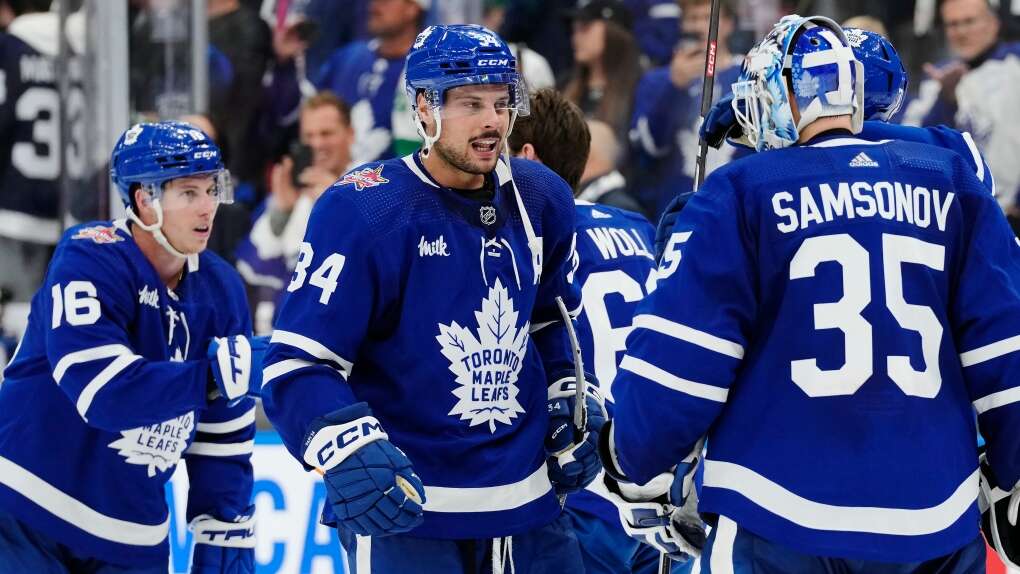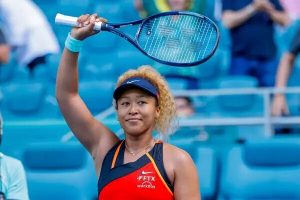
Which Maple Leafs are most likely to return next season? Who stays? Who goes?
Some change is going to be inevitable for the 2022–23 Maple Leafs.
While the top of Toronto’s roster includes a few untouchables, the salary cap is going to necessitate movement elsewhere. Should they ship out aging veterans to make way for younger talent? Should they try to be bigger players in free agency? And what about the trade market?
Who’s likely to play elsewhere next season? Who, on the other hand, is sticking around?
The Untouchable Division
Auston Matthews: This one feels pretty self-explanatory: He’s staying. Matthews has two years left on his contract, with an extension possible as of July 2023. But by the summer of 2024, he can leave as a UFA. Leafs management has already signaled their intentions to try and keep him as a “lifetime leaf,” so Matthews is not going anywhere in the next calendar year. Toronto remaining a contending team is going to be key if they’re going to be able to convince the Hart Trophy candidate to sign long-term.
Mitch Marner: He chased away some playoff ghosts with an eight-point performance against Tampa. This after a 97-point regular season. Easily the most intriguing part of that season, and what it portends for the future, is the goal scoring Marner showed off in the second half. He’s already a dominant player in all situations and continues to improve, making him the Leafs’ most important player after Matthews. Marner is signed for three more seasons, one more than Matthews.
Morgan Rielly: The eight-year, $60-million contract extension Rielly signed in October tells you everything you need to know about his job security. Rielly has a full no-movement clause all the way until July 1, 2028, too, so it’s possible he becomes the franchise’s all-time leader in games played, assuming good health. Six-and-a-half more seasons would do it.
The Highly Unlikely to Leave Division
William Nylander: That contract is looking better and better. Nylander is pegged to have the 77th highest cap hit ($6.9 million) in the NHL next season. He’ll fall even further once 2022 free agency wraps. Forty goals don’t seem out of the question for Nylander at some point. He hit a career high with 34 last season, and more importantly, delivered a strong postseason for the second year in a row. He’s (mostly) silenced his critics. Is there a world in which the Leafs could move him in the offseason? It’s not impossible. It’s just hard to see how the team subtracts Nylander and improves. Are they trading him for a forward(s) and finding better value? Deal him for a defenceman and that forward group loses meaningful/necessary punch. Nylander’s contract does expire after the 2023-24 season. Will the Leafs be able to afford his next deal? And could that lead to a move before it expires?
John Tavares: Emphasis on “highly unlikely” here. Tavares has a full no-movement clause and three years left on his contract. He’s also the captain. His value is projected to slip under his cap hit for the first time this coming season, according to Dom’s model, and his defensive play has come under increasing scrutiny. It’s hard to see a divorce being on the table, given all the added layers here, but finding ways to get more out of Tavares is going to be a talking point all offseason.
The Staying Put Division
Michael Bunting: It took only one season for Bunting to make himself an essential part of his hometown team. Nobody has fit in better around Matthews and Marner than the 26-year-old from Scarborough. More than that, Bunting brings ingredients the Leafs lacked previously. He’s a pest, first off. That helped him draw the third-most penalties in the NHL. He’s also competitive every night. There’s no question who the Leafs’ No. 1 left winger will be to start next season.
David Kampf: What a find Kampf turned out to be for the Leafs. Like Bunting, signing Kampf for two seasons, not one, (at a $1.5 million cap hit) proved to be a masterstroke. The Leafs no longer have any questions in the third-line centre spot. And Kampf’s value rose even higher in the playoffs. There might still be room for him to grow offensively.
T.J. Brodie: Brodie doesn’t always get a lot of fanfare, but he’s quickly become one of the more important players on the roster. His dependable 21 minutes a night have rounded out the blue line from where it was two or three years ago. And his results are good enough that he’s ranking among the top 20-odd shutdown D in the league. He turns 32 in a couple weeks, but given his skating ability, he seems to have plenty of gas left in the tank. Add in a full no-trade clause and a back-loaded contract and, yeah, he’s not going anywhere.
Mark Giordano: Giordano is coming back on a two-year deal worth only $1.6 million. A no-brainer for the Leafs, really. Giordano delivered just as they hoped he would after a midseason trade from Seattle — the picture of reliability in all situations. He’s bound to solidify the third pair at age 39 next season, but he can move up if need be, too. He’ll kill penalties and likely land a spot on one of the Leafs’ two power-play units. He’s Jason Spezza 2.0 in some ways, a vet who takes less (a better discount than Spezza even) to chase a Cup with his hometown team.
Erik Källgren: He did just enough for the Leafs when they needed him. Kallgren is signed for another season and will be patrolling the Marlies crease to start next season. The Leafs will need to add a more experienced, capable backup (assuming Petr Mrazek doesn’t return) and likely a No. 3, too.
Kyle Clifford: The Big Red Dog has a new two-year deal for a hair over league minimum and is a favourite of the coaches and management. He will likely spend some time with the Marlies, but he’s beginning to become the new Martin Marincin as a depth player who comes back again and again in an AHL-NHL tweener role.
The So Long, Farewell Division
Ilya Mikheyev: A big payday is coming, and the Leafs probably aren’t the team willing, or able, to pay it. Is it a lock that he’s gone? Maybe not. Perhaps Mikheyev doesn’t quite find the market he desires in free agency and the Leafs lure him back with a deal that’s heavy on security (with a lower cap hit). Mikheyev might still want more opportunity than he’s likely to get in Toronto. On the open market, it’s not implausible he’ll command more than $4 million on a long-term deal, and get the top-six role he’s been clamouring for.







